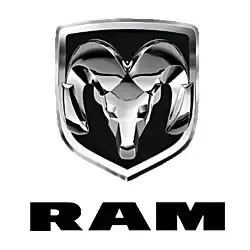RAM C/V Tire Pressure
Most common recommended tire pressure for RAM C/V is 36 psi based on year of production, trim and OEM tire size, but it maybe different for older models. It is imperative to confirm the exact tire inflation for your RAM C/V to ensure safety on the road. Always refer to your vehicle owner's manual for the correct tire pressure designated by vehicle's manufacturer.
Select your RAM C/V production year to see its recommended tire inflation.
| Model Year | Front Tires | Rear Tires |
|---|---|---|
| 2015 RAM C/V | 36 psi | 36 psi |
| 2014 RAM C/V | 36 psi | 36 psi |
| 2013 RAM C/V | 36 psi | 36 psi |
| 2012 RAM C/V | 36 psi | 36 psi |
Recommended Tire Pressure for RAM C/V
The importance of maintaining the recommended tire pressure for RAM C/V vehicles cannot be overstressed, as it plays a pivotal role in ensuring the safety, fuel efficiency, and longevity of both the tires and the vehicle itself. Proper tire inflation is critical for optimal handling and stability, ensuring that the vehicle responds predictably in all driving conditions, which is especially vital for a utility vehicle like the RAM C/V that may be used to carry variable loads or perform in diverse driving scenarios. Additionally, correct tire pressure helps in achieving the best possible fuel efficiency, as under-inflated tires increase rolling resistance, requiring more energy (fuel) to move the vehicle. This not only leads to unnecessary fuel consumption but also contributes to increased CO2 emissions, impacting the environment negatively. Furthermore, tires inflated to the manufacturer's recommended levels wear more evenly and have a longer life span, preventing premature tire replacement and saving the vehicle owner significant amounts of money over time. Regularly checking and adjusting tire pressure, therefore, ensures that the RAM C/V operates efficiently, safely, and economically, highlighting the importance of this simple but crucial maintenance task.

All listed guides, data and/or calculations are for informational purposes only. TirePressure.com does not warrant or make any representations regarding the accuracy of or the results of the use of this information. Always refer to vehicle owner's manual for the correct tire pressure configuration.